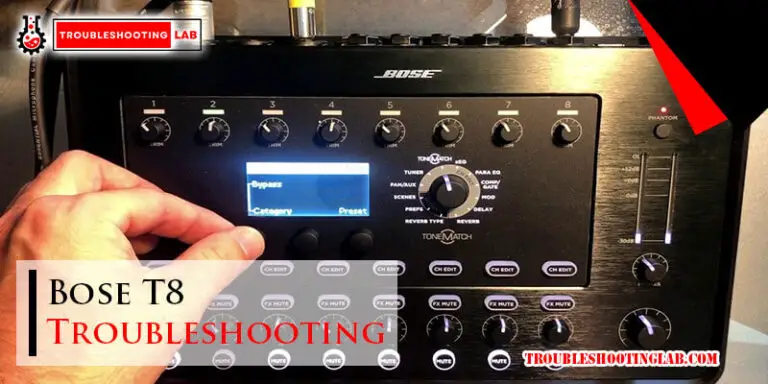Arris Modem Troubleshooting: Resolve Connectivity Issues Fast
Dealing with Arris modem issues can be frustrating. But you are not alone.
Many users encounter problems with their Arris modems. This guide will help you troubleshoot common issues. Arris modems are popular for their reliability and performance. But like any device, they can sometimes have problems. Whether it’s slow internet speeds, connectivity issues, or frequent disconnections, these issues can disrupt your online activities.
Understanding the root cause can save you time and hassle. In this blog post, we will explore simple steps to diagnose and fix common Arris modem problems. By following these tips, you can get your internet back up and running smoothly. Let’s dive into the world of Arris modem troubleshooting!

Common Connectivity Issues
Experiencing connectivity issues with your Arris modem? These problems can disrupt your online activities. This section will help you understand and troubleshoot common connectivity issues.
Frequent Disconnections
Frequent disconnections can be frustrating. Here are some steps to fix this:
- Check if your modem is overheating. Place it in a cool area.
- Inspect the cables. Make sure they are secure and not damaged.
- Reset your modem. Press the reset button for 10 seconds.
- Update your modem’s firmware. Visit the Arris website for updates.
- Contact your ISP. There could be issues from their side.
Slow Internet Speeds
Is your internet slower than usual? Try these tips:
- Disconnect unused devices. Too many devices can slow down your internet.
- Move your modem. Place it in a central location for better coverage.
- Check for interference. Other electronics can interfere with your signal.
- Run a speed test. Compare it with your ISP’s promised speed.
- Upgrade your plan. You might need a faster internet plan.
For a quick reference, here is a table summarizing the common connectivity issues and solutions:
| Issue | Solution |
|---|---|
| Frequent Disconnections |
|
| Slow Internet Speeds |
|
Initial Checks
Experiencing issues with your Arris modem can be frustrating. Initial checks are crucial. These steps often solve many common problems. Let’s begin with the basics.
Verify Cables And Connections
First, ensure all cables are secure. Check the power cable. It should be firmly in the modem and the outlet. Next, inspect the coaxial cable. Ensure it is tightly connected to the modem and the wall jack. Loose cables can cause intermittent internet issues.
Also, check the Ethernet cable. This connects the modem to your computer or router. Make sure it is properly plugged in at both ends. If any cable looks damaged, replace it. Faulty cables can disrupt your connection.
Restart Modem
Restarting the modem often solves many issues. Follow these steps:
- Unplug the modem’s power cable.
- Wait 30 seconds.
- Plug the power cable back in.
- Wait for the modem to fully restart. This can take a few minutes.
After the modem restarts, check if your internet connection is restored. Sometimes, a simple restart can fix connectivity problems.
If the problem persists, you may need to contact your internet service provider. They can check for outages or other issues.
These initial checks are often enough to resolve common modem issues. Always start with these basic steps before moving on to more advanced troubleshooting.
Modem Firmware Updates
Modem firmware updates are crucial for maintaining optimal performance. They ensure your Arris modem runs smoothly and securely. Keeping the firmware current helps resolve issues and enhances features. Below, we will guide you through checking and updating your modem firmware.
Check Current Firmware Version
First, access your modem’s settings. Open a web browser and enter your modem’s IP address. Typically, it’s 192.168.0.1 or 192.168.100.1. Login with your username and password. The default credentials are often “admin” for both fields. Navigate to the status or system information page. Here, you will find the current firmware version. Note it down for comparison.
Update Firmware
Check the Arris website for the latest firmware version. Compare it with your noted version. If they differ, download the new firmware file. Return to your modem’s settings page. Locate the firmware update section. It’s usually under “advanced” or “administration” tab. Select the downloaded file and begin the update process. Do not interrupt the update. Once finished, your modem will restart with the latest firmware.
Signal Strength
Signal strength is crucial for a stable internet connection. Weak signal strength can lead to slow speeds and frequent disconnections. Understanding how to check and improve signal strength can enhance your internet experience.
Check Signal Levels
To check signal levels, access the Arris modem’s interface. Enter the modem’s IP address in your browser. Log in with your username and password. Navigate to the signal strength page. Look for downstream and upstream power levels. Ideal downstream power levels range from -7 dBmV to +7 dBmV. Upstream power levels should be between 35 dBmV and 50 dBmV. If levels are outside these ranges, you may have signal issues.
Improve Signal Strength
To improve signal strength, try moving the modem to a central location. Avoid placing it near thick walls or metal objects. These can block the signal. Use a high-quality coaxial cable. Ensure all cable connections are secure and tight. You can also consider using a signal booster or amplifier. These devices can enhance weak signals.
Network Settings
Network Settings play a crucial role in ensuring your Arris modem performs optimally. Incorrect settings can lead to connectivity issues, slow internet speeds, or frequent disconnections. This section will guide you through the essential steps to reset and configure your network settings for a seamless internet experience.
Reset Network Settings
Sometimes, a simple reset can resolve many network issues. Follow these steps to reset your network settings:
- Locate the Reset Button on your Arris modem. It is usually at the back.
- Press and hold the button for about 10 seconds using a small pin or paperclip.
- Release the button and wait for the modem to restart. This process may take a few minutes.
- Once the modem restarts, all settings will be restored to their factory defaults.
Configure Correct Settings
After resetting, configuring the correct settings is essential to ensure proper connectivity. Follow these steps:
- Open a web browser and type
192.168.0.1in the address bar to access the modem’s interface. - Log in using the default username and password (usually “admin” for both).
- Navigate to the Network Settings or Internet Settings section.
- Ensure the DHCP is enabled. This allows automatic IP address assignment.
- Set the Wi-Fi SSID (network name) and Password for secure wireless access.
- Save the settings and restart the modem for changes to take effect.
Following these steps ensures your Arris modem is configured correctly. Proper configuration helps maintain a stable and secure network connection.
Interference Issues
Experiencing interference issues with your Arris modem? Interference can disrupt your internet connection and make it slow. Understanding and minimizing these issues can improve your online experience.
Identify Sources Of Interference
Interference can come from many sources. Identifying these sources is the first step. Common sources include:
- Microwaves
- Wireless phones
- Baby monitors
- Other Wi-Fi networks
These devices can cause signal drops and slow speeds. Microwaves and wireless phones often use the same frequency bands as your modem.
Minimize Interference
Once you identify the sources, you can take steps to minimize interference. Follow these tips to ensure a smooth connection:
- Place your modem away from other electronic devices.
- Keep your modem at a central location in your home.
- Use the 5GHz band if your modem supports it.
- Change the channel on your router to avoid crowded frequencies.
- Ensure your modem firmware is up-to-date.
Placing your modem in a central location can help distribute the signal evenly. Using the 5GHz band can reduce interference because it is less crowded.
Changing the channel on your router can also help. Many routers default to the same channels. By switching to a less crowded channel, you can improve your connection.
Finally, updating your modem firmware ensures you have the latest features and fixes. This can also help reduce interference.
Isp Related Problems
ISP related problems can disrupt your internet connection even if your Arris modem is in perfect condition. These issues are often beyond your control and require action from your Internet Service Provider (ISP). Here’s how to identify and address these problems.
Check Service Outages
Begin by checking if there is a service outage in your area. Many ISPs have a website or app where they post outage information. You can also visit websites like DownDetector to see if others in your area report similar issues. If there is a known outage, you may need to wait until the ISP resolves it.
Contact Isp Support
If there are no reported outages, contact your ISP support team. Explain your issue and ask if there are any problems with your service. They can run diagnostics on your connection and provide guidance. Sometimes, they may need to reset your connection or send a technician to your home.

Advanced Troubleshooting
Advanced Troubleshooting helps resolve complex issues with your Arris modem. These steps require a deeper understanding of the modem’s functions. Using diagnostic tools and analyzing logs can often pinpoint the root of the problem. Follow this guide for detailed instructions.
Use Diagnostic Tools
Arris modems come with built-in diagnostic tools. These tools help identify and fix issues. Access these tools through the modem’s web interface. Open a web browser and enter your modem’s IP address. Typically, this address is 192.168.100.1.
Once logged in, navigate to the Diagnostics tab. Here, you can run various tests. These include connection tests, signal strength, and system checks. Check for any red flags or failed tests. If needed, note the results for further analysis.
Analyze Logs
Analyzing logs can provide valuable insights. Access the logs through the modem’s web interface. Go to the Logs section. These logs record different activities and errors.
Look for repeated error messages or unusual patterns. Common errors include T3 timeouts and T4 timeouts. These indicate connection issues. Use the information to pinpoint the problem. Below is an example of a log entry:
Time Not Established (Time Not Established)
No Ranging Response received - T3 time-out;
Regular log reviews help maintain your modem’s performance. Keep an eye on any changes in log patterns.
Frequently Asked Questions
Why Is My Arris Modem Not Connecting To The Internet?
Check if the cables are securely connected. Restart the modem. Contact your ISP if the issue persists.
How Do I Reset My Arris Modem?
Press and hold the reset button on the back for 10 seconds. Release and wait for the modem to reboot.
What Do The Lights On My Arris Modem Mean?
The lights indicate power, internet connection, and activity status. Refer to your modem’s manual for specific meanings.
How Can I Update My Arris Modem Firmware?
Visit the Arris website. Download the latest firmware. Follow the instructions provided to update.
Why Is My Arris Modem Slow?
Check for interference from other devices. Ensure firmware is up-to-date. Restart the modem to improve speed.
Conclusion
Troubleshooting your Arris modem can be simple. Follow the steps provided carefully. Restart the modem if needed. Check cables and connections. Ensure firmware is updated. Contact support for persistent issues. Regular maintenance keeps your modem running smoothly. Stay connected and enjoy a hassle-free internet experience.
Happy browsing!






